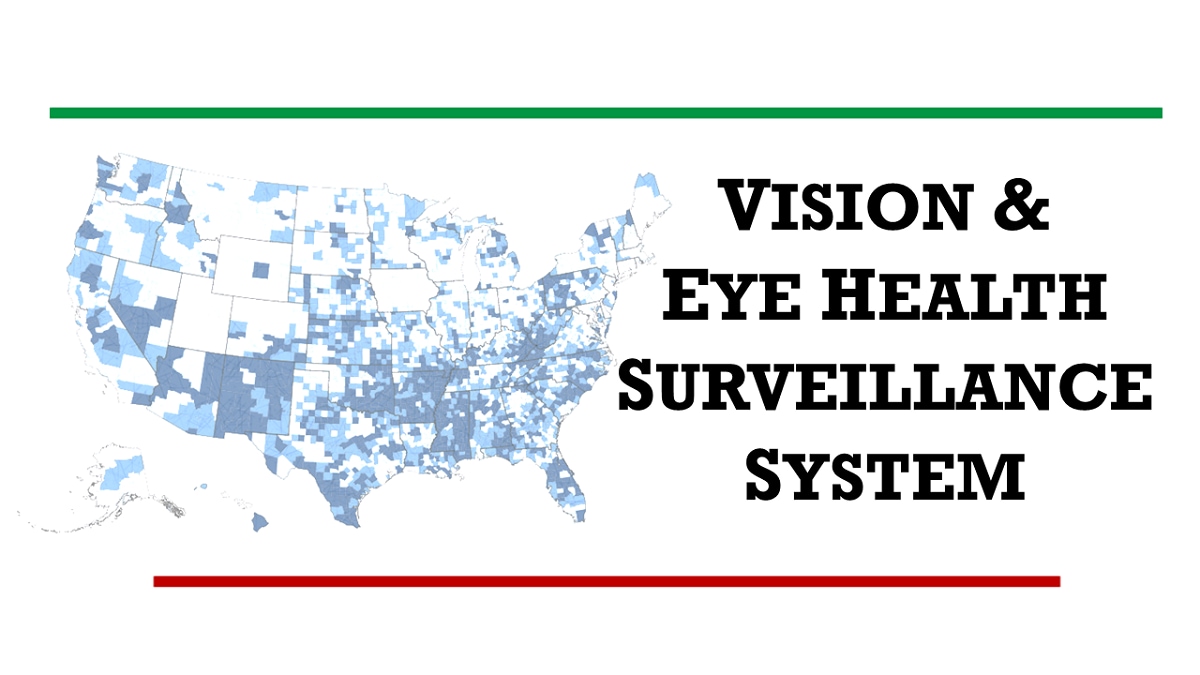Key points
- CDC's Vision Health Initiative and NORC at the University of Chicago partnered to develop the national Vision and Eye Health Surveillance System (VEHSS).
- VEHSS uses new and existing data sources to help health professionals, researchers, policy makers, and patients understand the scope of vision loss, eye disorders, and eye care services in the United States.
- VEHSS is intended to grow and improve over time based on input and needs of the vision health community.

Goals of VEHSS
- Identify and collect existing sources of information on vision and eye health.
- Create case definitions to analyze data consistently.
- Analyze data to estimate:
- The prevalence of eye disorders and disabilities.
- The use of eye-health services.
- Health disparities in visual health treatment and outcomes.
- The prevalence of eye disorders and disabilities.
- Develop composite prevalence estimates of vision loss and major eye diseases by combining information from multiple different data sources in order to create more comprehensive estimates.
- Disseminate the information developed by the system to key stakeholders, and respond to feedback to continually improve the quality and usefulness of the system.
Limitations
VEHSS summarizes "single source prevalence estimates" for vision loss and eye disorders from published population-based epidemiological studies and ten datasets. This includes four administrative claims databases, five surveys, and data from ophthalmology practices' electronic health records systems compiled by the IRIS Registry.
VEHSS also produces "composite prevalence estimates" for vision impairment and blindness and major eye diseases by combining information from multiple, individual datasets summarized on VEHSS.
Users are encouraged to pay attention to each data source's sampling frame and limitations, when they interpret the data. VEHSS estimates should be considered provisional and subject to revision.
Known limitations of the VEHSS system include:
- VEHSS data may change due to revisions in data indicators, analysis methods, or updates to the underlying data sources. Please note the data release date when using or citing VEHSS data.
- Neither the VEHSS development team nor CDC suggest that any of the single-source VEHSS estimates represent national prevalence estimates. All single-source VEHSS website estimates represent the prevalence of an indicator measured within the sample of individuals from which the data were measured.
- VEHSS suppresses estimates and denominators based on small sample sizes or, in the case of surveys, estimates with questionable reliability. Rules used to suppress estimates and denominators are specified in the analysis plans and data analysis documentation reports.
- Data limitations are included in the documentation report for each data set. In general, VEHSS data are limited in the following ways:
- VEHSS does not include any person-level data files.
- VEHSS does not report rates for individual diagnosis codes.
- VEHSS does not release patient counts or denominators for Vision Service Plan (VSP) Global claims. IRIS® Registry data files are not available for download.
- Rates from claims data are based on the population of patients included in the respective insurance claims pool only. No claims data are nationally representative.
- Electronic Health Records registry rates represent a convenience sample of patients who saw a care provider who participated in the registry during the calendar year of observation. Not all providers are included in registries, and such data are not nationally representative.
- Survey estimates may be considered nationally representative, but differences in the validity of survey indicators, sample selection, and data collection methods will impact results.
- Population-based examination studies are derived from local geographic samples and are not nationally representative.
- VEHSS does not include any person-level data files.
- VEHSS users are strongly encouraged to access the technical documentation for the different data sources in VEHSS which are available on each data description page, and the Reports and Publications page. Users are also encouraged to review any official non-VEHSS documentation when such documentation is available.
Please share your questions or detection of possible errors with the VEHSS development team at the following email address: [email protected]
